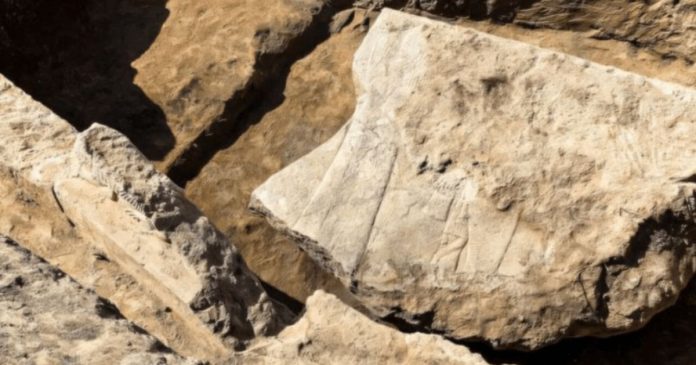Researchers from Heidelberg University have announced a remarkable discovery: a colossal stone carving from the 7th century BCE. They found it within the throne room complex of King Ashurbanipal’s North Palace at the ancient site of Nineveh, near modern-day Mosul, Iraq. The intricately sculpted panel measures 5.5 meters long and 3 meters high. It showcases an unprecedented portrayal of Assyrian royalty alongside prominent deities—a feature experts say has no parallel in known Assyrian palace art.
Nineveh, the former capital of the Neo-Assyrian Empire under rulers like Sennacherib in the 8th century BCE, has long been a key center for Mesopotamian archaeology. Recently, Professor Aaron Schmitt led an excavation that uncovered fragmented sections of a 12-ton relief. The relief lay buried within a sediment-filled cavity behind a niche in the palace’s throne hall. Scholars believe the sculpture’s exceptional preservation results from its intentional burial during the Hellenistic era (3rd–2nd centuries BCE). This protected it from earlier explorations, including 19th-century British expeditions that removed other artifacts now housed in the British Museum.
Divine Authority and Royal Power: A New Vision of Assyrian Iconography
The relief depicts King Ashurbanipal, the empire’s last great monarch, positioned between the supreme deity Ashur and the warrior goddess Ishtar, Nineveh’s patron. Divine figures accompany him, including a fish-apkallu—a mythical sage linked to wisdom and protection—and a conjecturally restored scorpion-man, a hybrid guardian figure. Researchers hypothesize that the composition originally featured a grand winged sun disk symbolizing divine authority above the central scene.
Professor Schmitt emphasized the relief’s significance in redefining understanding of Assyrian iconography, noting that depictions of major gods within royal contexts were previously undocumented. “This discovery challenges existing assumptions about the separation of sacred and regal imagery in Assyrian art,” he stated. The team posits that the relief’s placement opposite the throne room entrance served both ceremonial and symbolic purposes, reinforcing the king’s divine mandate.
Heidelberg University’s ongoing Nineveh initiative, launched in 2018 by Near Eastern studies scholar Professor Stefan Maul, aims to reconstruct the palace’s architectural and cultural legacy. The project team collaborates with Iraq’s State Board of Antiquities and Heritage. Researchers plan to carefully analyze the fragments before reinstalling the restored relief in its original setting. This will allow the public to engage with the artifact within its historical context.
This groundbreaking find not only enriches knowledge of Assyrian artistic traditions but also opens new avenues for studying the interplay of religion and monarchy during Ashurbanipal’s reign. Further studies will explore the relief’s ritual context and its role in legitimizing royal power, with findings slated for publication in peer-reviewed journals. The team’s efforts underscore a commitment to preserving Iraq’s cultural heritage while illuminating the grandeur of one of antiquity’s most formidable empires.

